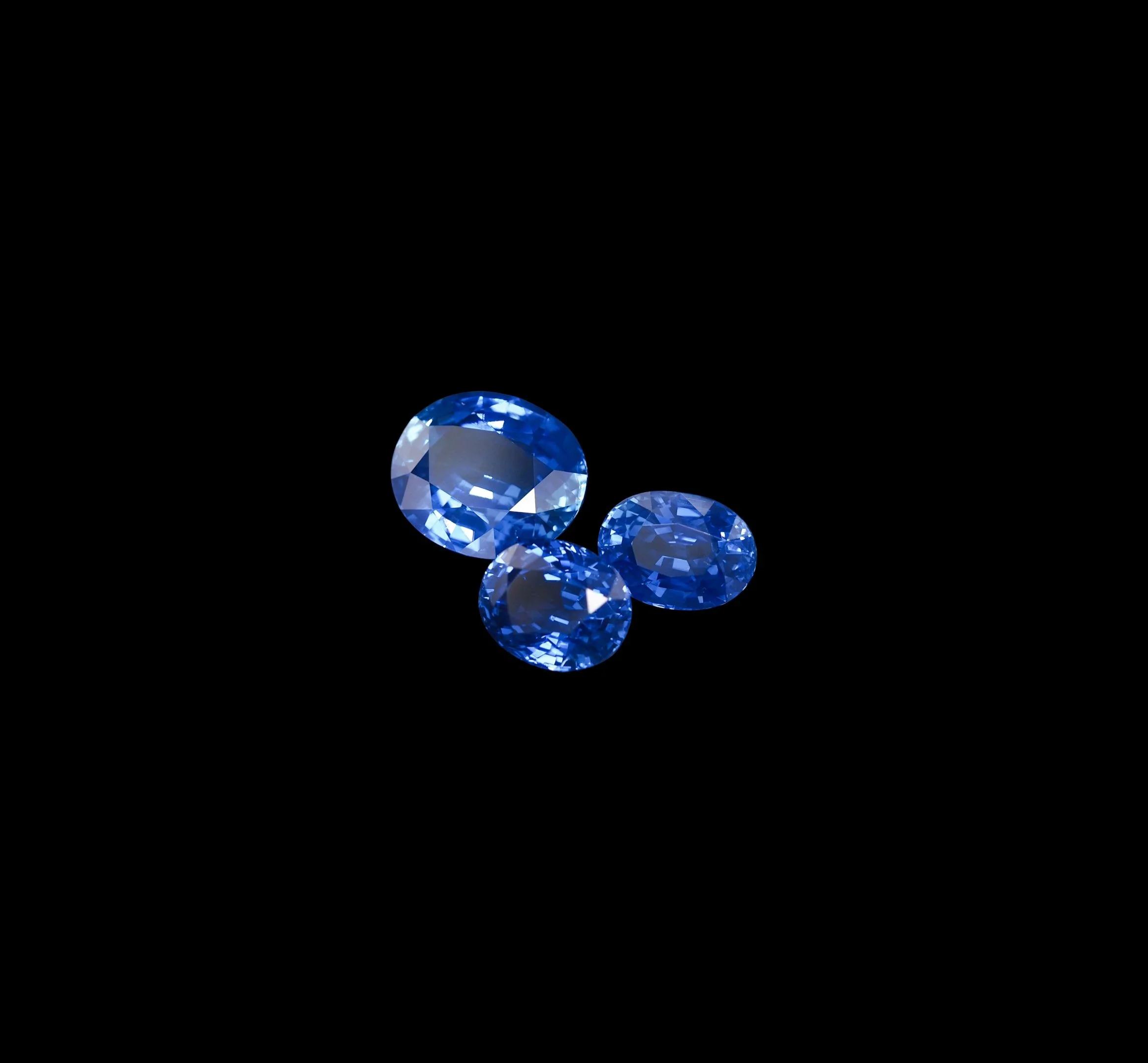Where Are Sapphires Found? Top 10 Global Sources
Let’s spill some sparkle: if you’ve ever wondered where sapphires are found, prepare to be globe-trotted through lush gem jungles and mountain caves. These stunning sapphire gemstones are jewels of the mineral corundum family, celebrated for their intense color, hardness, and dreamy allure. A single sapphire can be every hue under the sun—shades of pink sapphires, deep blues, even a blush peach Padparadscha that feels like sunrise distilled in crystal.
With so many sapphire varieties on offer, knowing exactly where your gem comes from helps explain its color, its cultural cachet, and—yes—its worth. Whether you’re in search of an heirloom piece, curating a gem collection, or exploring timeless sapphire engagement rings in Singapore, provenance is everything.
So pack your virtual passport, darlings. Let’s explore the top ten sapphire sources around the world—and why each is iconic, quirky, and uniquely brilliant.
Why Origin Matters in the World of Sapphires
Before we jet-plane into sapphire destinations, let’s talk about the backbone of why origin matters. A sapphire is not just a stone—it’s a story carved by geology, artisanal hands, and cultural heritage. The color intensity, the clarity, the cut—all bear the fingerprint of where the sapphire was formed.
Certified origin reports are available from labs like the GIA (Gemological Institute of America) and the SSEF (Schweizerische Stiftung für Edelstein-Forschung (Swiss Foundation for the Research of Gemstones). A verified blue sapphire from Kashmir will fetch dramatically higher pricing than one from a lesser-known deposit, even if they look like twins at first glance. The crystal structure in Kashmir sapphires imparts that silky sheen; stones from Australia may show those brooding greenish undertones. So knowing where your sapphire gemstone is found can be a statement of taste and investment.
1. Kashmir, India
Famous for: Cornflower blue, velvet finish
Mining status: Largely depleted
Why it dazzles: Auction-room desirability beyond fairytale proportions
Let’s begin with full luxury: Kashmir sapphires are the haute couture of gems. These sapphires are famed for a velvety cornflower blue that looks lit from within. They were discovered in the late 1800s amid Himalayan splendor, and today, Kashmir sapphires are a collector’s Holy Grail.
Their allure comes partly from rarity—mining has ceased, and only a handful of top-grade Kashmir sapphires appear in auctions each decade. Bidders fall over themselves when these gems snarl at Christie’s or bask in Sotheby’s spotlight. A single Kashmir sapphire can catalyze a bidding war, pushing it into seven-figure territory. It’s legendary for a reason.
2. Sri Lanka (Ceylon)
Famous for: Light to vivid blues, as well as rare Padparadscha
Key locale: Ratnapura—the “City of Gems”
Why it's cherished: Ethical sourcing, artisanal tradition
Sri Lanka, once known as Ceylon, has arguably the richest sapphire palette on earth. From ice-blue sapphires to the blush-pink Padparadscha, sapphires from here can be both elegant and fiery. It’s no surprise that Ratnapura—literally, “City of Gems”—has been a sapphire hub for millennia.
But what truly sets Sri Lanka apart is its approach to mining. Often, women miners and family units mine these gems manually, no heavy machinery. There’s a growing ethical wave here, with artisans committed to environmental care and fair labor. For the mindful buyer, that heritage is just as dazzling as the stone itself.
3. Myanmar (Burma)
Famous for: Deep royal blue sapphires, velvety saturation
Challenges: Export restrictions, ethical sourcing concerns
Why it matters: Historical prestige, collector acclaim
Burmese sapphires share ancestry with the famous rubies of Myanmar—a royal hue, bold, velvety. These stones speak of depth and tradition; when discovered, they can rival Kashmir in price and quality. But accessing them today is tricky. Restricted exports, ethical red flags, and geopolitical conditions mean that a legitimately sourced Burmese sapphire often shows impeccable certification and pedigree.
When you land one, it’s more than a gem—it’s a testimony to rarity, heritage, and proven sourcing.
4. Madagascar
Famous for: A kaleidoscope of colors—teal, violet, pink, and blue
Hot spots: Ilakaka and Sakaraha
Why it’s rising: Diverse color pool, eco-conscious mining
Madagascar is the modern sapphire power-player. It delivers an incredible color range—not just reliable blues, but funky pinks, lush greens, even bold multicolored parti sapphires. Artfully cut in places like Ilakaka and Sakaraha, these sapphires bring fresh energy and flair to contemporary jewelry.
Many Malagasy mines now champion sustainable practices, with artisanal and eco-focused operations rising in prominence. That means a Madagascan sapphire can be as ethically strong as it is visually stunning.
5. Thailand
Famous for: Inky, cutter-friendly blues
Role: Bangkok is the globe’s sapphire trade and cutting capital
Why it’s essential: Expert cutting that transforms stones worldwide
Thailand may not produce the most famous sapphire origins, but it does cut and trade almost every stone on the global market. The Thai sapphire story is about craftsmanship: the ability to transform rough sapphires into museum-quality masterpieces.
Bangkok is where gemstones go to become ready for red carpets. You’ll find sapphire cutters who’ve honed their skills for lifetimes, and shops with stones polished to near perfection. Any sapphire, regardless of its origin, becomes elevated once it’s passed through Thai hands.
6. Australia
Famous for: Dark, greenish-blue tones
Regions: Queensland and New South Wales
Why it’s practical: Tough, affordable, and ready for everyday wear
Australia is where the adventurous go for robust styling. These inky blue to greenish sapphire gemstones often come with darker tones and strong undertones—perfect for dramatic, everyday pieces that don’t cave under a scratch test. Aussie miners fashion them to last without extremes in pricing.
Queensland and New South Wales remain reliable sources that consistently yield beautifully tinted gems—ideal for fashionistas who need a durable, accessible sapphire.
7. Montana, USA
Famous for: Cool steel-blue and teal
Mines: Yogo Gulch (lilac whispers), Rock Creek (deeper brilliance)
Why it matters: Traceable, sustainable, treasure-hunting appeal
Some of the most adventurous sapphires in the world hail from Montana. These stones can be ethereal twilight blues or deeper teal, depending on whether they’re from Yogo Gulch or Rock Creek. They’re celebrated for being untreated, clearly traceable, and exuding rugged Northern beauty.
Buying a sapphire from the USA, in the USA, carries a certain bragging order-of-origin influence, and is perfect for lovers of sustainable, traceable sourcing.
8. Cambodia
Famous for: Rich royal blue sapphires akin to Burmese
Mining zone: Pailin Province
Why it’s emerging: Ethical sourcing, boutique charm
Cambridge might steal all the academic glow in the UK, but in gem circles, Pailin sapphires from Cambodia are quietly gaining attention. Echoing the royal blues of Burma, they have the same depth but without the same sourcing controversy. Mines here are often small-scale, local, and more ethically navigated.
Think of Cambodian sapphires as boutique, with allure and intrigue, but fewer crowds.
9. Tanzania
Famous for: Fancy sapphires in yellow, pink, green
Locale: Tunduru
Why it’s bold: For lovers of color statements and runway pop
Tanzania is more celebrated for tanzanite, but its sapphires—especially from Tunduru—are electric. In shades of yellow, pink, green, they've caught the eye of high-profile designers. These sapphires are about making a statement—imagine bold, earthy or vibrant colored gemstone jewelry that speaks of passion and confidence.
Shot to fame recently through social media, they’re capturing hearts—and hashtags.
10. Vietnam
Famous for: Bright blues and iconic star sapphires
Region: Luc Yen
Why it surprises: Small-scale, high-impact finds with cosmic flares
Vietnam’s sapphire scene is boutique and selective. In Luc Yen, you’ll find crisp blue tones and rare star sapphires—those that show a glowing six-ray star effect under lamp light. They’re not mass-market; they’re hidden in mountain pockets.
Vietnamese sapphires are darling discoveries—perfect for collectors who value rarity and luminosity.
Honorable Mentions
Four more exciting sources worth a sidebar:
Nigeria: Chasing blue and yellow gems in growing operations
China: Increasingly calibrated, improving clarity
Nepal: Rare Himalayan finds beloved only by insiders
Colombia: Known for emeralds, occasionally gem-gracing sapphires
How Origin Affects Certification & Value
Let’s decode why origin tweaks the final price tag so dramatically:
Origin premium: Verified Kashmir or Burmese sapphires can sell for 3 to 10 times the price.
Collector magnetism: Those natural, zero-light, heat-treatment minimal Kashmir vibes? Collectors chase them.
Lab reporting: Gem laboratories stamp the value, which identifies mineral corundum structures and geochemical markers unique to each region.
Ethical assurance: In a world where buyers want transparency and fair wages, sapphires traced to ethical hand mining operations score brownie points.
Luxury story: There isn't a single person on earth who doesn’t love a story—“This star sapphire came from a remote Luc Yen mountain and was hand-cut in Thailand…” That sells.
Choosing the Sapphire That Speaks to You
Here’s your personality-meets-prowess guide:
Seeking legacy and grandeur? Go for Kashmir or Burma—regal history and premium patina.
Want sustainable but elegant? Sri Lanka or Montana are perfect—truly traceable, ethically mined, and not shouty.
Yearning for bold fashion? Madagascar and Tanzania deliver vibrant statement pieces.
Feeling stealth and style? Australia or Cambodia are quietly dramatic—less bling, more presence.
Craving cosmic beauty? Vietnamese star sapphires will light your world.
Conclusion
We’ve traced where sapphires are found—from the lofty Himalayas to the sapphire deposits of South African hills, green-toned Australia to sustainable sapphire mining practices in the U.S. ranges. Sapphires are mined across the globe, but each one carries more than just sparkle—it carries history, geology, and craftsmanship.
But where do you fall among these worlds? Are you all about elegance with legacy, ethics with charm, or haute couture color? Choosing a sapphire is more than “finding a sparkly rock.” It’s about finding you within the stone.
Whether you’re drawn to the gem varieties found in Sri Lanka, the vibrant pulse of New York, or the mindful mining practices behind each piece, your sapphire should reflect more than taste—it should reflect truth.
The next time someone asks, where are sapphires found?, think less map and more tapestry. Sapphires are mined in more than locations—they’re discovered in moments of clarity, meaning, and magic. Sapphire and soul—a story waiting to be told.
And darling, no one wears it quite like you.
Find your perfect match with Arte Oro—where sapphire meets story, and you meet your forever gem.

